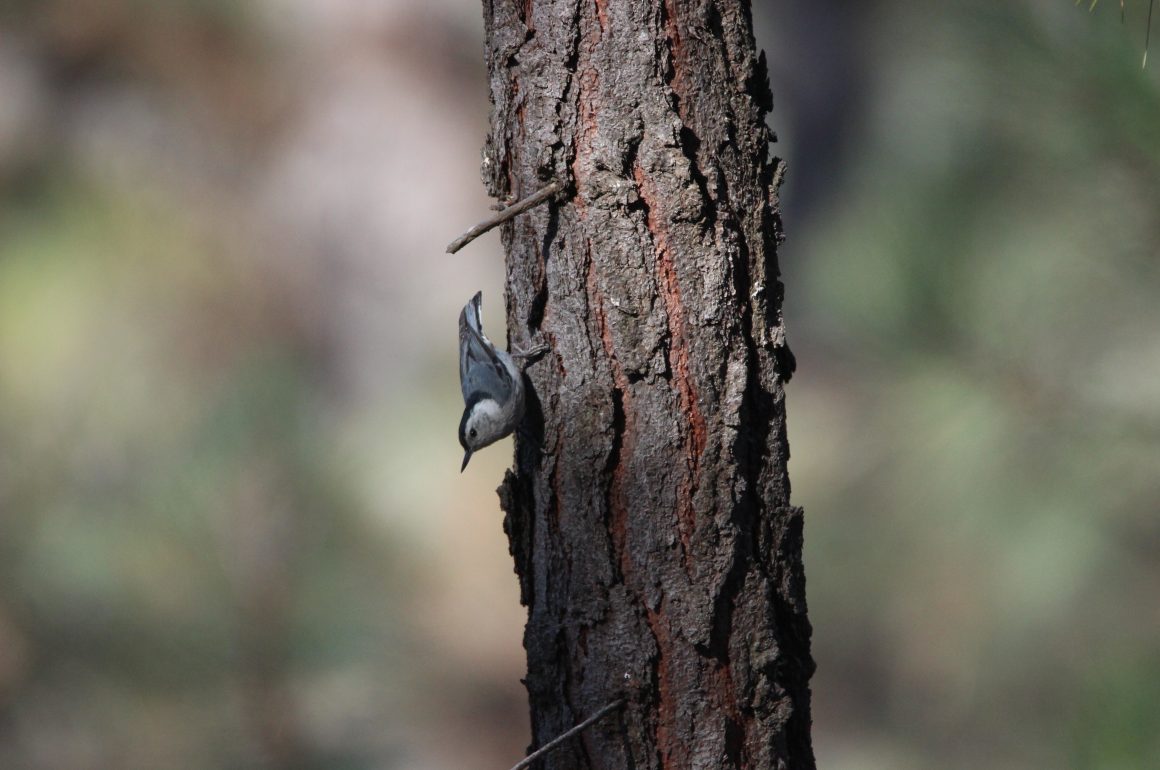
After a nine-person birding blowout a week before, I found myself birding alone last Monday. Of late, I haven’t felt all that ambitious on days when I bird alone. So I only traveled the 10 miles (16 km) to one of my favorite nearby sites, the tiny town of Laurelito. Technically, this town is part of the municipality of Morelia, population one million plus. But its feel and ecology is a world away.
In October and November, at the end of our rainy season, Laurelito is a fantastic spot for hummingbirds. And like all of Michoacán, our species counts climb significantly while migratory birds are here. But in May, and alone, I was only able to total 38 species at Laurelito. That’s pretty typical for the site and date. Northern birders might be surprised to know that that is a low number here in central Mexico.
Coming up with a surprise or two is also typical on any given day. What was not typical, however, was that I walked away from Laurelito with five new species for the year. Of these five, the big surprise for the Yellow-eyed Junco was that I hadn’t seen one months earlier. How did it get away from me for so long? The Black-headed Siskin is another bird I would have expected to see sooner, but nowhere near as easily as the Junco. I was not particularly surprised that the Elegant Trogon, Black-chinned Sparrow, and Rufous-crowned Sparrow had played hard-to-get for so long this year. They are much more elusive species.
It was not a great day for photographing these five birds, but I did get photographic proof of each of them. For some, I am offering up a much better second photo from some earlier encounter.
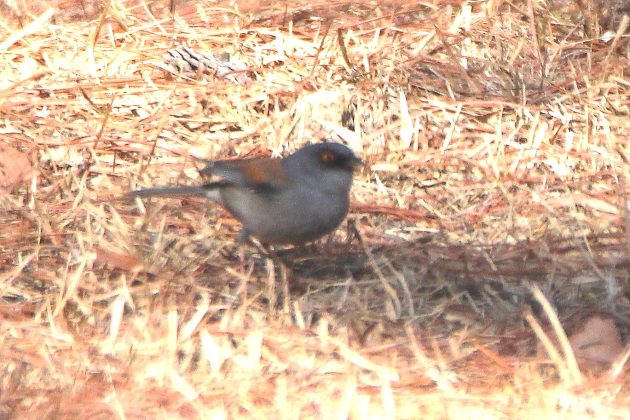
Here’s a better Yellow-eyed Junco, from a day long ago at Laurelito.
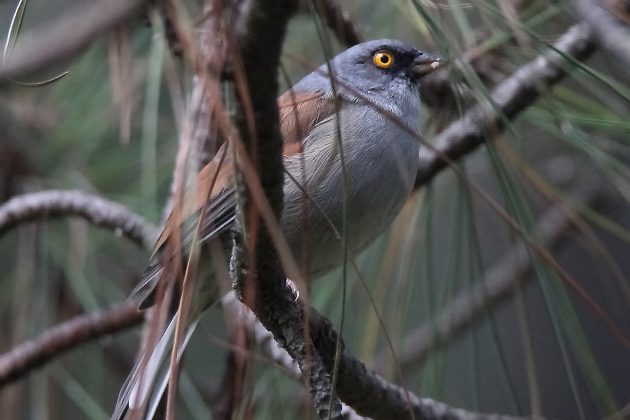
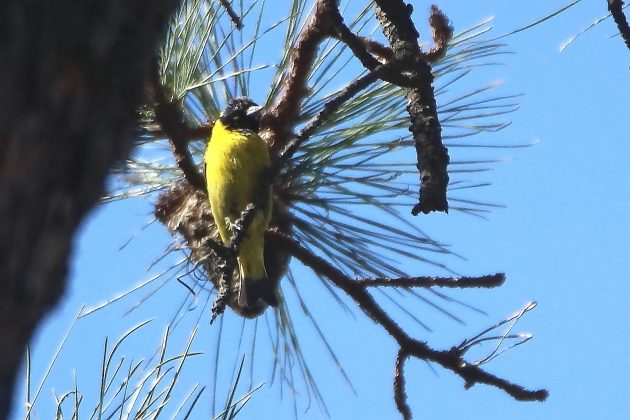
And a better, earlier Black-headed Siskin from a different site.
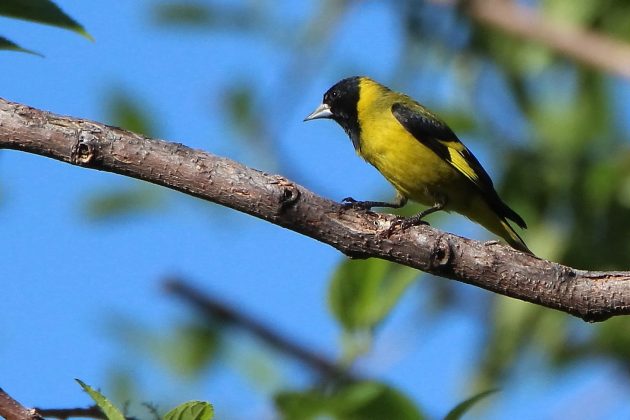
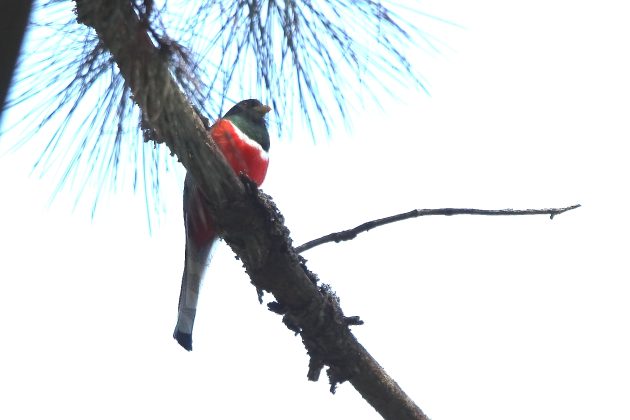
My day out did give me a passable photo of this Elegant Trogon.
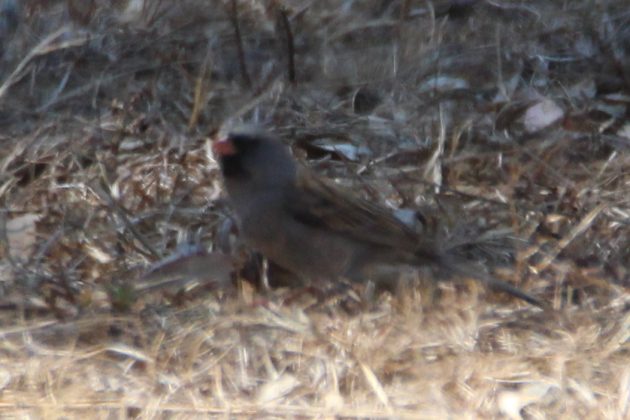
My best photo of one of the Black-chinned Sparrows was barely good enough to confirm the ID. So here’s a better shot from a previous year and different site. Black-chinned Sparrows are my favorite Mexican sparrow.
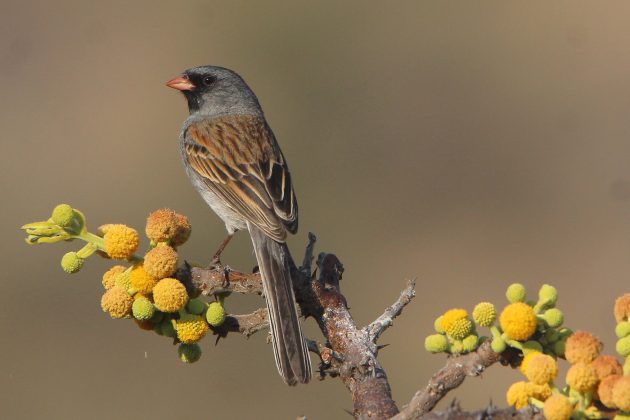
I have definitely shown the above photo before on 10,000 Birds. But it’s a good’un.
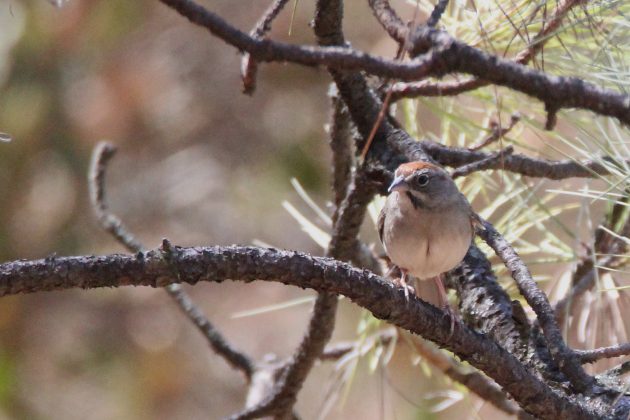
This week’s Rufous-crowned Sparrow photo wasn’t too bad.
When I first get to Laurelito, I always park near a tiny church, under many tall pines, with no underbrush. This is a good place to see Brown Creepers — but not this day. However, Grace’s Warblers (the only Wood Warblers that prefer pines over oaks) were around. And my hope of seeing some White-breasted Nuthatches was abundantly satisfied. Nuthatches rock.
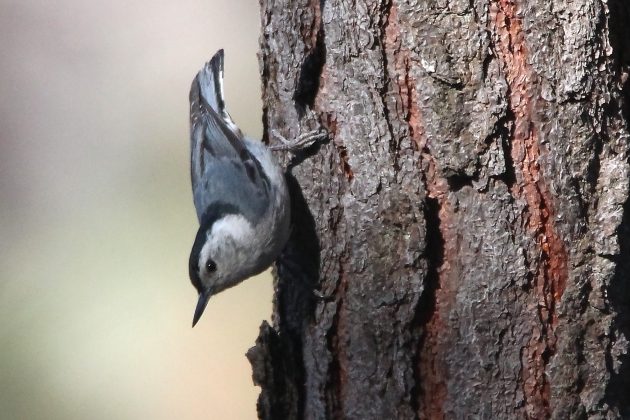
I walked past the currently barren Salvia patch in front of the tiny town itself, and dreamed of all the hummingbirds that will soon feed and fight there. A slightly lower pine woods failed to produce any Red Crossbills, a difficult species that I rarely see anywhere but Laurelito. But beyond that stretch are the open grasslands with eucalyptus trees and oaks, and that was where I saw my year-bird Juncos, Siskins, and two Sparrows. A few Warbling Vireos and Yellow-rumped Warblers were the only migratory birds that had not yet headed north. Endemic Transvolcanic Jays flew noisily overhead. The Buff-breasted Flycatchers that were there are also endemic, with the added (and enormous) benefit of being the only Empidonax flycatchers that do not look like all other 13 Empidonax flycatchers. Many Eastern Bluebirds were also there, which is typical for this site.
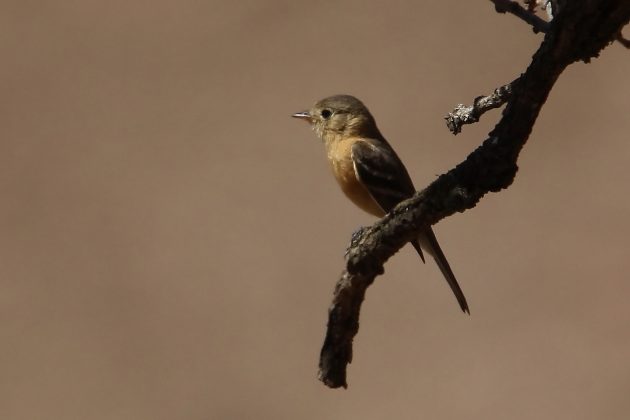
This Eastern Bluebird was not very colorful; probably a youngster.
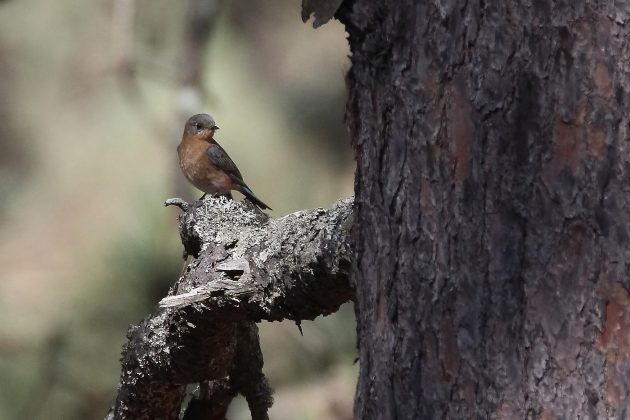
After walking through the open woodland/grassland section, I reached the darker woods on a northern-facing slope. Here our resident Crescent-chested Warblers and Slate-throated Redstarts made their reliable appearance. This was also where the Elegant Trogon shown above finally made its appearance, after making its barking call from far away for most of the morning (along with a second, unseen individual).
38 species is not a large total for a morning in central Mexico, even after many winter species have flown north to breed. So at the end of the morning, I headed over to the nearby reservoir of San José de las Torres for one last hour. Officially, I wanted to check out its recovery from having been dredged a year ago. But I may have also wanted, just a little bit, to pump up the day’s species numbers with some water-loving species.
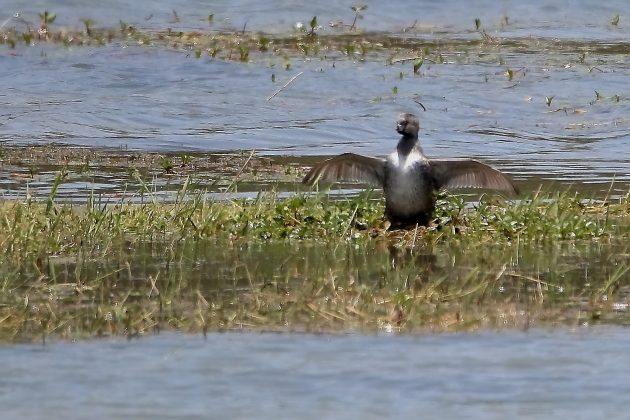
The reservoir had at least two Pied-billed Grebe nests.
In fact, I added 11 more species to my list, for a day’s total of 49 species. There, that’s more typical for a day in May birding in central Mexico… In case you have thought of coming to central Mexico and would like to know what to expect.
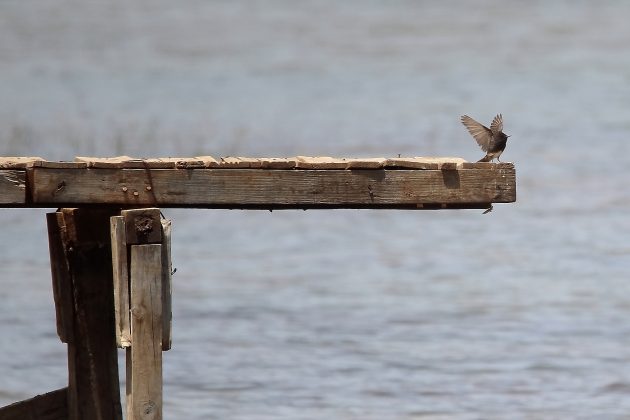
A Black Phoebe, celebrating life.









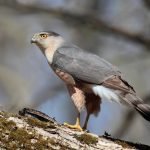

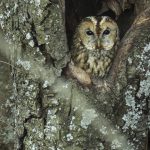
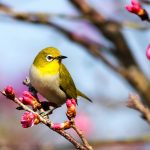
Paul Lewis is among the best birders in Michoacan, if not the best.
It’s wonderful that on Mondays he goes out exploring and developing so many birding sites in that state.